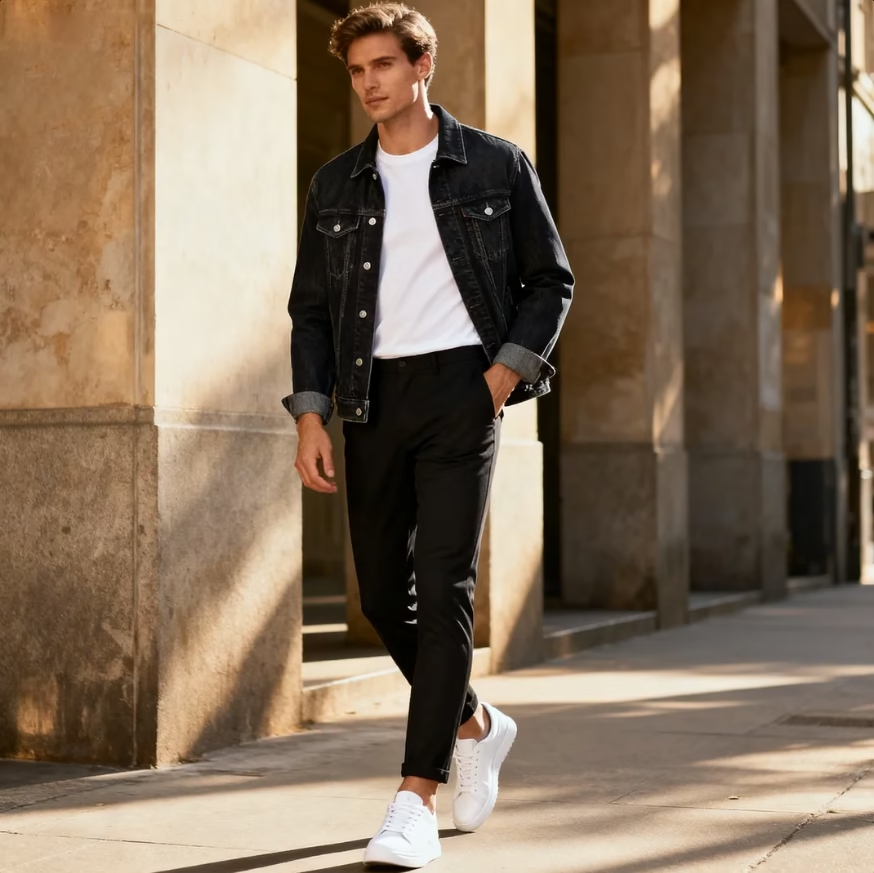From Copy-Pasting OOTDs to Building a Style System: The Mindset Shift Every Fashion Exporter Needs
As a clothing exporter who’s negotiated deals with brands from Milan to Mumbai, I’ve witnessed a paradox: while consumers crave “unique” styles, 70% of small-to-mid-sized brands still rely on trend-chasing—copying Instagram “OOTDs” or rival collections to fill their lookbooks. This “copy-paste” approach might save time, but it’s killing profitability and brand identity. The future of fashion retail isn’t in mimicking others—it’s in building a style system: a structured, data-backed framework that turns random outfits into cohesive, sellable narratives. Let’s unpack how to make that shift.

The “Copy-Paste” Trap: Why Blind Trend-Chasing Fails
For years, brands (especially new ones) operated on a simple logic: “If a influencer wore it, our customers will want it.” But in 2024, this mindset is obsolete. Here’s why:
- Oversaturation: Social media floods feeds with identical “OOTDs,” making it impossible to stand out. A recent report by Fashion United found 62% of Gen Z shoppers unfollow brands that “all look the same.”
- Mismatched Demand: What works for a LA influencer (think oversized linen) might flop in Berlin, where minimalist tailoring dominates. Copying without context leads to dead stock.
- No Brand Memory: Random outfits don’t build recognition. Customers might buy a top because it “looks cute,” but they won’t associate it with your brand’s story.
The result? High return rates, stagnant loyalty, and margins that keep shrinking. The alternative? A style system that aligns your collection with who your customers are—not just what’s trending.
What Is a “Style System”? (And Why It’s Your Secret Weapon)
A style system is a repeatable process for curating outfits that feel intentional, on-brand, and commercially viable. Think of it as a “style blueprint”: instead of chasing every trend, you define core principles (e.g., “modern retro,” “effortless elegance”) and build looks around them.
Brands that adopt this see transformative results:
- 30% higher conversion rates (McKinsey, 2023), as customers recognize and trust your aesthetic.
- 25% reduced returns, because outfits are tailored to local preferences and body types.
- 50% faster design cycles, since your team builds on existing style rules instead of starting from scratch.
Building Your Style System: 4 Practical Steps
Step 1: Audit Your Customer (Not Just Trends)
Start with data, not Instagram. Analyze:
- Purchase history: Which items are frequently bought together? (e.g., “70% of buyers pair our linen shirts with wide-leg trousers.”)
- Demographics: Age, location, lifestyle (e.g., “Our Parisian clients prioritize work-to-weekend versatility”).
- Feedback loops: Surveys, reviews, or in-store interviews (e.g., “Customers say our dresses lack ‘occasion’—they want pieces for both brunch and dinner”).
Example: A Vietnamese brand we work with discovered 65% of their online buyers were office workers under 30. Instead of copying beachwear trends, they built a “Smart Casual Office” style system—tailored blazers with breathable silk blouses, paired with ankle boots. Sales jumped 40% in Q3.
Step 2: Define Your “Style DNA”
Your DNA is what makes your brand uniquely yours. Extract it by answering:
- Aesthetic keywords: Are you “minimalist,” “bohemian,” or “retro-futurist”? (Avoid vague terms—“minimalist” could mean Jil Sander or The Row; be specific: “clean lines with subtle texture.”)
- Color palette: Stick to 3-5 core hues (e.g., “desert neutrals with pops of terracotta”).
- Fabric rules: Prioritize natural fibers (linen, organic cotton) or technical blends (recycled polyester)?
- Silhouette preferences: Relaxed, structured, or oversized?
Pro Tip: Document this DNA in a “Style Bible”—a 10-page guide with mood boards, fabric swatches, and examples of “do’s and don’ts.” Share it with designers, buyers, and even marketing teams.
Step 3: Create a “Scenario-Based Outfit Matrix”
Customers don’t buy “items”—they buy “solutions.” Map outfits to real-life moments:
- Work: Trousers + blouses + blazers (adjust for remote vs. in-office).
- Weekend: Knits + jeans + sneakers.
- Special occasions: Dresses + statement jewelry.
For each scenario, create 3-5 “core outfits” (mix-and-matchable) and 2-3 “hero looks” (seasonal, aspirational). This ensures consistency while allowing flexibility.
Case Study: A Spanish brand used this matrix to reduce design waste by 35%. By focusing on 5 key scenarios, they cut redundant pieces and doubled cross-selling (e.g., a blazer paired with 3 different skirts).
Step 4: Iterate Based on Feedback
A style system isn’t “set it and forget it”—it evolves. Track:
- Sell-through rates: Which outfits sell out first? Double down on those.
- Social engagement: Which posts get saved/shared? Replicate that energy.
- Seasonal shifts: Adjust for weather (e.g., add cardigans to summer outfits in cooler regions).
FAQs: Your Style System Questions, Answered
Q: Can small brands afford to build a style system?
A: Absolutely. Start small—even a 1-page “DNA cheat sheet” and 3 core outfits will make a difference. Tools like Canva (for mood boards) or Excel (for sales tracking) cost little but deliver big.
Q: How do I balance creativity with commerciality?
A: Dedicate 70% of your collection to “core styles” (safe, data-backed) and 30% to “experimental pieces” (trend-driven). This lets you innovate without alienating your base.
Q: What if my customers have diverse tastes?
A: Segment your audience. A plus-size line might need a “curvy fit” subset, while a youth brand could target “teen” vs. “young adult” subgroups. Your style system should flex to serve key segments—not everyone.
Wrapping Up: From Chaos to Confidence
Moving from “copy-paste” to “style system” isn’t just about looking better—it’s about connecting better. When customers recognize your brand’s logic, they stop seeing “clothes” and start seeing a partner in their daily lives.
At Sheen, we’ve helped brands in 12 countries transform their approach—from a Turkish knitwear label that boosted repeat purchases by 28% to a Brazilian beachwear brand that now ships 50% fewer returns.
Ready to build your own style system? Explore our free “Style DNA Workbook” (download below) or reach out for a personalized consultation.
Stay stylish. Stay strategic. Stay Sheen.

